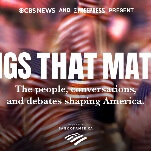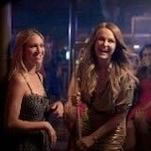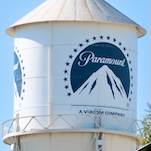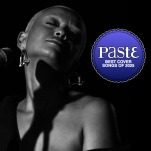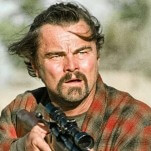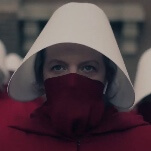How the ’80s Twilight Zone honored and extended Rod Serling’s legacy
There’s an episode of Northern Exposure in which the impressionable, young Shelly Tambo (Cynthia Geary) becomes addicted to watching TV after her doting husband Holling (John Cullum) installs a satellite dish. In need of guidance, Shelly turns to Cicely, Alaska’s resident spiritual adviser and high priest of cool, the disc jockey and autodidact Chris (John Corbett). Chris is sympathetic to her plight, though he can’t relate to it; he says he himself has never gotten the appeal of TV, “’cept maybe for the Zones.” The Twilight Zone, Rod Serling’s classic sci-fi anthology series, which ran from 1959 to 1964, is the original underground cult show, and one of the earliest TV series to acquire a new, hip luster years after it was originally broadcast. Kids who grew up watching it in syndicated reruns were transfixed by the low-budget punchiness of the best episodes, and their perfectly preserved, claustrophobically intense atmosphere of Cold War paranoia.
So it makes sense that The Twilight Zone was one of the first TV series to get its own reboot. Still, the fact that it happened at all can largely be chalked up to the magical effect that the name “Steven Spielberg” has on Hollywood executives. Spielberg was one of the four big-name directors who worked on 1983’s Twilight Zone: The Movie, which represented a landmark moment in Boomer nostalgia and its effect on the shape of popular culture. There had been movies based on TV shows before, but spin-offs like Munster, Go Home!; House Of Dark Shadows; and the Get Smart movie, The Nude Bomb, were cheap fan bait for hardcore addicts. Along with the Star Trek movies, the Twilight Zone film—best remembered for George Miller’s high-adrenaline remake of “Nightmare At 20,000 Feet” and Joe Dante’s fun remake of “It’s A Good Life” (and, sadly, for the on-set helicopter crash that took the lives of actor Vic Morrow and two children)—served notice that the generation that grew up watching TV took its pop-culture nostalgia seriously.
For his next trick, Spielberg announced plans to launch his own TV series, Amazing Stories—basically, a high-concept, A-list-talent version of The Wonderful World Of Disney—and suddenly, anthology shows were the hot ticket of the fall 1985 TV season. Since CBS owned the rights to The Twilight Zone, the show gave the network a ready template with strong name recognition that it could produce in-house. (NBC, which already had Amazing Stories, also took a flier on a reboot of Alfred Hitchcock Presents, with new remakes of old episodes joined to “colorized” classic introductory sequences starring Hitch himself.)
The original Twilight Zone had served as a meal ticket for hungry young talent, which enhanced the interest value of those reruns whose unknown stars turned out to be stars of tomorrow (Robert Redford, Robert Duvall, and William Shatner). The new Twilight Zone attracted a number of big-name actors and directors who were charmed by the idea of being associated with Rod Serling’s venerable brand. Some of the directors who worked on the show—such as Wes Craven, who directed the first segment of the first episode and several other installments, and who was just coming off the original Nightmare On Elm Street movie—were as hot then as they would ever be; others, such as William Friedkin, had suffered some career setbacks, and may have seen this as a good chance to show what they could still do even when working fast and dirty, without the weight of a multimillion-dollar production on their backs.
The network also managed to pull in scripts from the likes of George R. R. Martin, novelist and Batman comics writer Alan Brennert, Farscape creator Rockne S. O’Bannon, and Babylon 5 creator J. Michael Straczynski, and sponsored adaptations of stories by Joe Haldeman, Arthur C. Clarke, Stephen King, Robert Silverberg, Theodore Sturgeon, Greg Bear, Robert McCammon, and Harlan Ellison. More remarkably, Ellison himself agreed to lend his name to the series as creative consultant, the unlikely get of the century given Ellison’s well-aired feelings about TV. (For the grisly details, see his book The Glass Teat, or any interview in which he was asked what he thought about how the makers of Star Trek handled his best-known TV script, “The City On The Edge Of Forever.”) Inevitably, Ellison walked off the series shaking his fist after one of his scripts, a Christmas episode based on a Donald Westlake story, elicited cries of horror from the Standards And Practices department.
The “new” Twilight Zone never achieved the stylistic unity and clear, strong personality of the original—a unity and personality that can make a fan more forgiving of the dud episodes turned out by Serling and his team, because a subpar episode of Serling’s Twilight Zone is still recognizably an episode of The Twilight Zone and not easily mistaken for anything else. But the show had too many talented people working on it, in too honest a spirit of attempting to do right by Serling’s legacy, to avoid producing its fair share of interesting episodes. The producers further honored Serling by not trying to replace him as on-screen host. Instead, Charles Aidman, an actor who had twice appeared on the original series, provided voice-over introductions. There was also a brief, shadowy glimpse of Serling’s face in the opening title sequence, set to a new version of the Twilight Zone theme provided by The Grateful Dead. (A second revival, which aired for a single season on the defunct UPN in 2002-2003, featured on-screen narration by Forest Whitaker; it is mainly remembered for a sequel to the classic episode “It’s A Good Life,” for which the older Bill Mumy and Cloris Leachman reprised their roles as the kid who wishes people into the corn field and his favorite adult.)
The episodes of the CBS series, which ran for two seasons, were an hour long, and some included three stories ranging in length from 10 minutes to half an hour each. After CBS stopped broadcasting the show, another season of half-hour stories was produced in syndication. Then the whole series was broken into half-hour chunks for syndicated reruns. For the purposes of this list, each story, regardless of its running time, is considered an “episode” of the new Twilight Zone.
“Shatterday” (season one, episode 1a): Bruce Willis stars as a smug, soulless yuppie who accidentally calls his home phone and finds himself talking to himself. Directed by Wes Craven from Brennert’s adaptation of a Harlan Ellison story, this little morality play has practically no supporting cast and zero atmosphere. But that just makes it easier to focus on the main (current) point of interest: seeing Willis, less than a year into a screen acting career that only really began when a 1984 guest appearance on Miami Vice and the spring 1985 premiere of Moonlighting yanked him out of total obscurity, where he was doing a one-man show.
“Nightcrawlers” (season one, episode 4c): The same year that both Sylvester Stallone and Chuck Norris had hit movies in which they refought the Vietnam War, this episode, directed by William Friedkin, presented a supernatural metaphor for the country’s inability to get over a war that had been over for a decade. Scott Paulin plays a troubled vet whose war flashbacks spill over into the real wold, collateral damage be damned. It also presented a bit of a problem for the folks in Standards And Practices, who were reportedly unprepared for the level of violence Friedkin included in his first cut.











